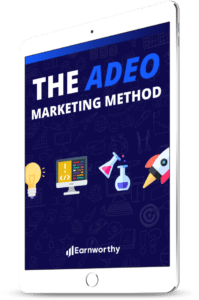When it comes to establishing a successful digital presence, quality visual content is one of the best ways of generating attention for your brand. Not only is well-crafted visual content a great way to increase engagement from your target audience, it can also help improve your website’s SEO. And while you may be tempted to only think of videos or clever memes when it comes to creating online visual content, there’s another, potentially even more valuable type of content that you shouldn’t overlook: the infographic.
What is an infographic?
In simple terms, an infographic is a visual representation of information or data. But there’s more to this than simply creating a pie chart or a graph. As the popular infographic website Visually explains, infographics often take large chunks of information regarding a particular topic and present it in a more easily-digestible format that combines captivating visuals and well-crafted text. This allows infographics to “present complex information quickly and clearly [and] integrate words and graphics to reveal information, patterns or trends.”
Infographics present information as a visual story with flow and meaning, serving as a valuable method of delivering facts and data to your audience. Information that would otherwise be difficult to understand becomes much more comprehendible and engaging, allowing your customers to make better-informed decisions and build rapport with your brand.
Infographics and content marketing
It’s no secret that visual content scores higher engagement than any other type of content marketing material on the web, and this is especially true when it comes to infographics. In fact, Hubspot reports that “infographics are liked and shared on social media three times more than any other type of content.”
Infographics are especially valuable in content marketing efforts because they provide information that is actually useful (and therefore more engaging) for your customers. It doesn’t matter if you’re a solar energy company trying to demonstrate the financial and environmental benefits of going green or an outdoors company explaining how to set up camping gear, your target audiences will be much more likely to remember and interact with the information presented in an infographic.
This is because the vast majority of us are visual learners, which makes your digital customers far more likely to read through an entire infographic than they are a text-based article. The visual appeal provided by an infographic makes your content easier to understand, and more likely to be shared as a result.
Infographics also provide a tremendous SEO boost when hosted on your website. Google’s search ranking algorithms are continuing to place an increased value on high-quality content, and the worthwhile information and high audience engagement provided by a well-made infographic ensure that your site will be perceived as more authoritative by search engines. In addition, as your infographic is shared across the web, it will generate valuable backlinks that further enhance your SEO efforts.
Creating and using your own infographics
As Search Engine Journal notes, while an infographic may seem relatively easy to make at first glance, crafting a truly worthwhile infographic requires a fair bit of work. Every good infographic needs to start with interesting and unique information. After all, even the flashiest of designs won’t do you much good if you aren’t using it to showcase valuable data that your target audience will actually be interested in.
Once you have gathered your data, the next step is to organize those facts into an engaging and well-written story, while simultaneously placing them in an appealing infographic layout. And thanks to the plethora of tools available to web users, you don’t even have to be a designer to come up with a good-looking infographic design.
Applications such as easel.ly, Piktochart and Canva allow you to create a gorgeous infographic in minutes with customizable templates, images and graphs (though to create a truly unique infographic design, you probably will need the help of a designer). Just don’t forget to include your company name and logo on the design!
Here’s an infographic I created just for this post, using Piktochart:
Share this Image On Your Site
Once your infographic is created, you need to get the most from it. And there’s more to this than simply posting the finished image to your blog. There are several additional options for sharing your infographic to increase awareness for your brand:
- Sharing it on social media (especially Facebook, Twitter, Pinterest and Tumblr)
- Submitting it to Visually and other infographic sharing sites
- Including it in your next marketing email
- Reaching out to bloggers and media outlets who are interested in the topic your infographic covers
The more you do to share your infographic across the web, the more likely it is to attract new customers and boost your SEO.
Conclusion
Creating and sharing high-quality infographics can provide a serious boost to your digital marketing efforts, no matter what industry you work in. As long as you use your infographics to share worthwhile information with your audience, customers will become more likely to engage with your content, providing great results for your content marketing and SEO campaigns.
Are you using infographics as part of your marketing strategy? If so, share what has worked for you in the comments section below on on Twitter!






